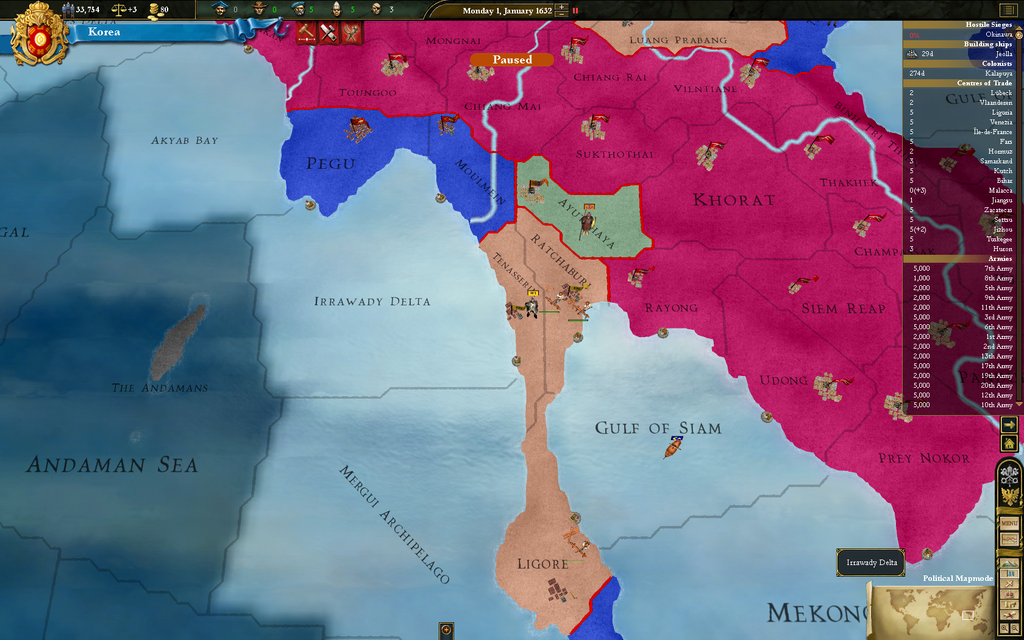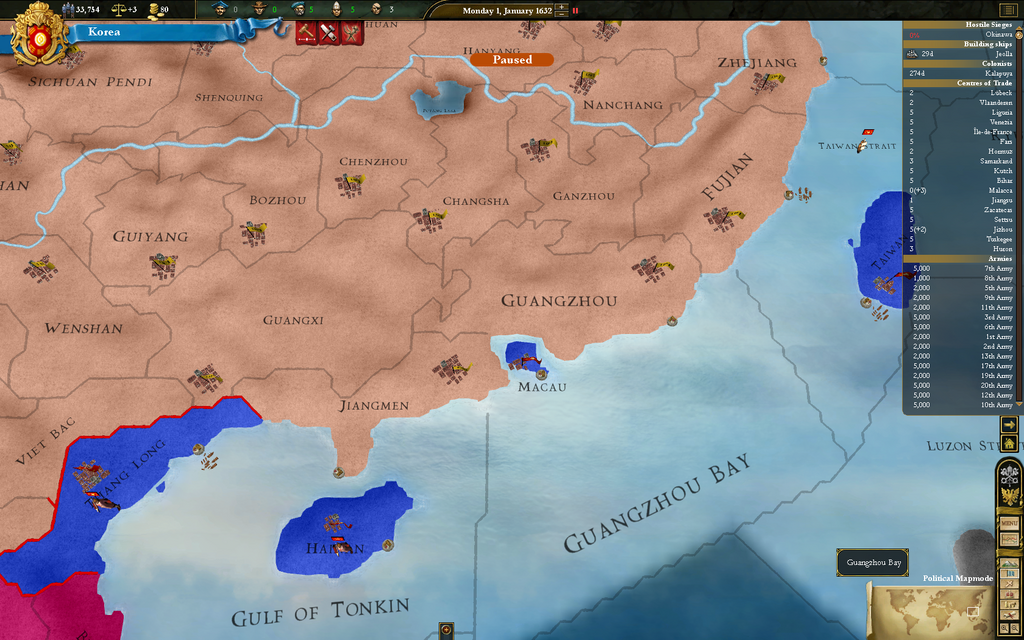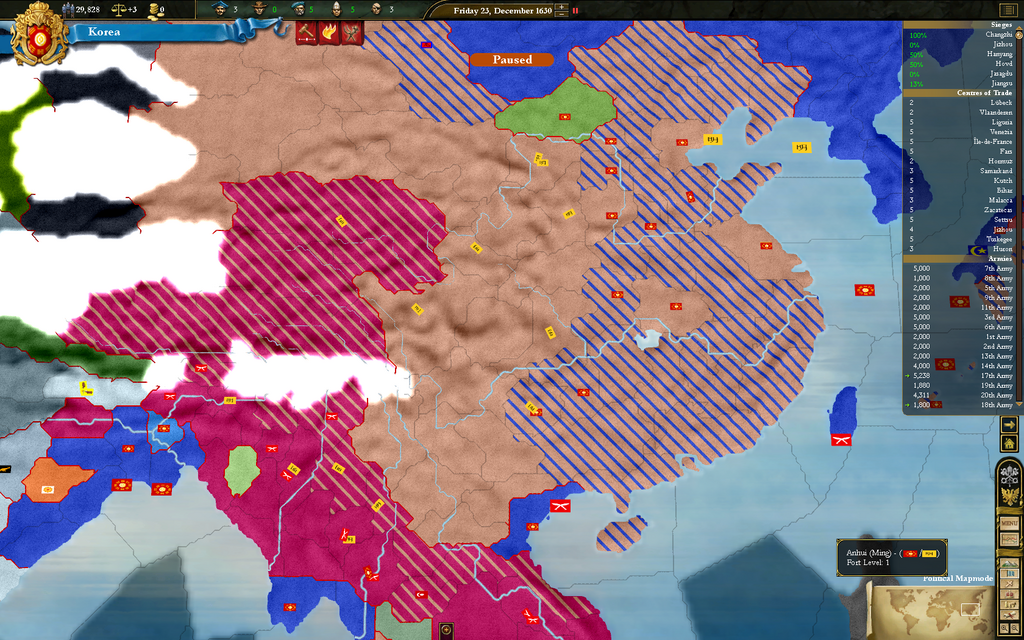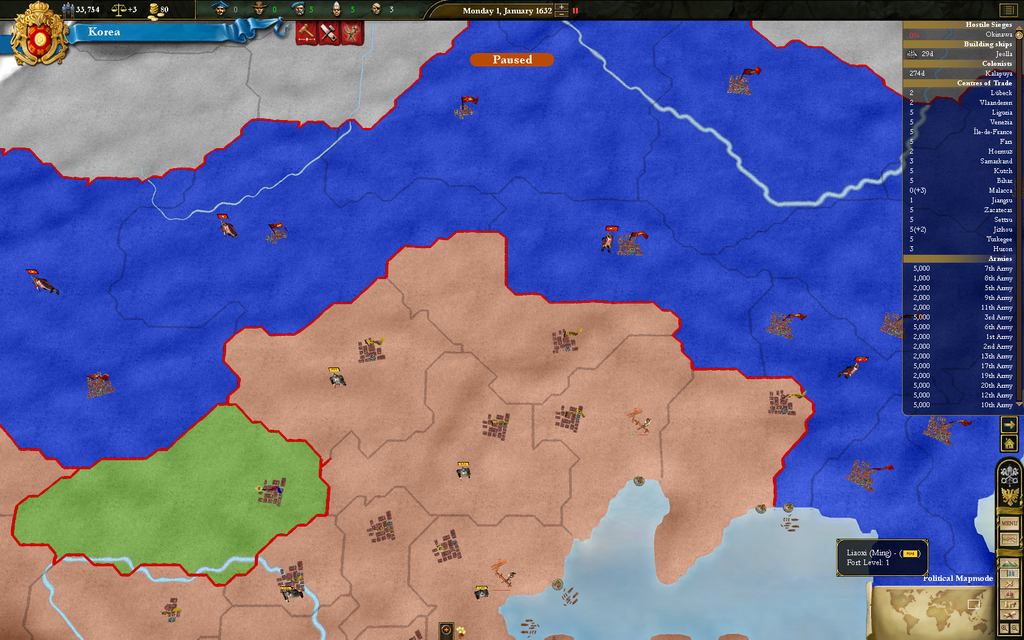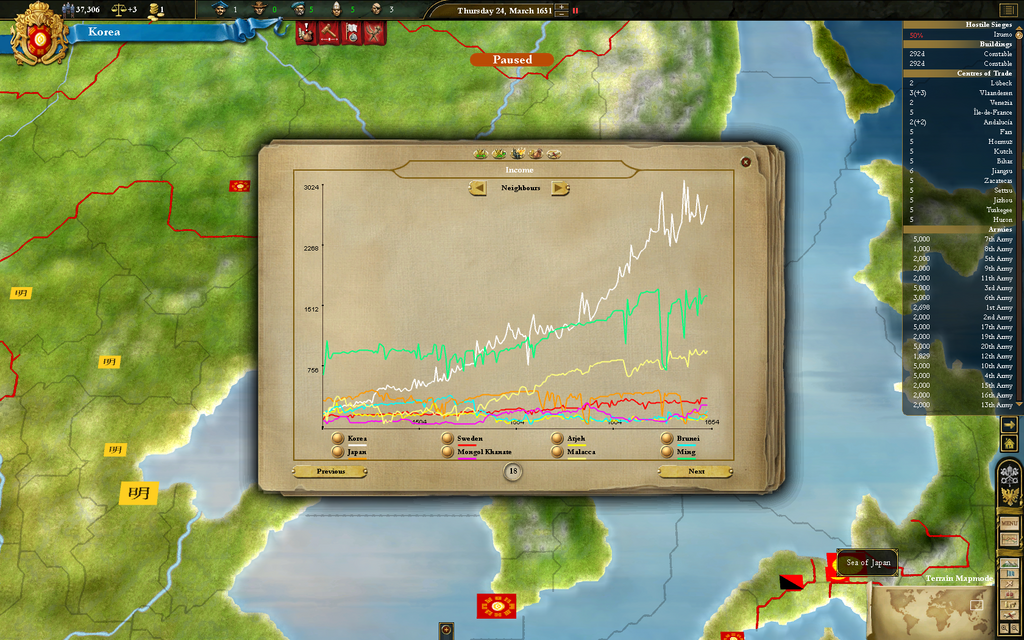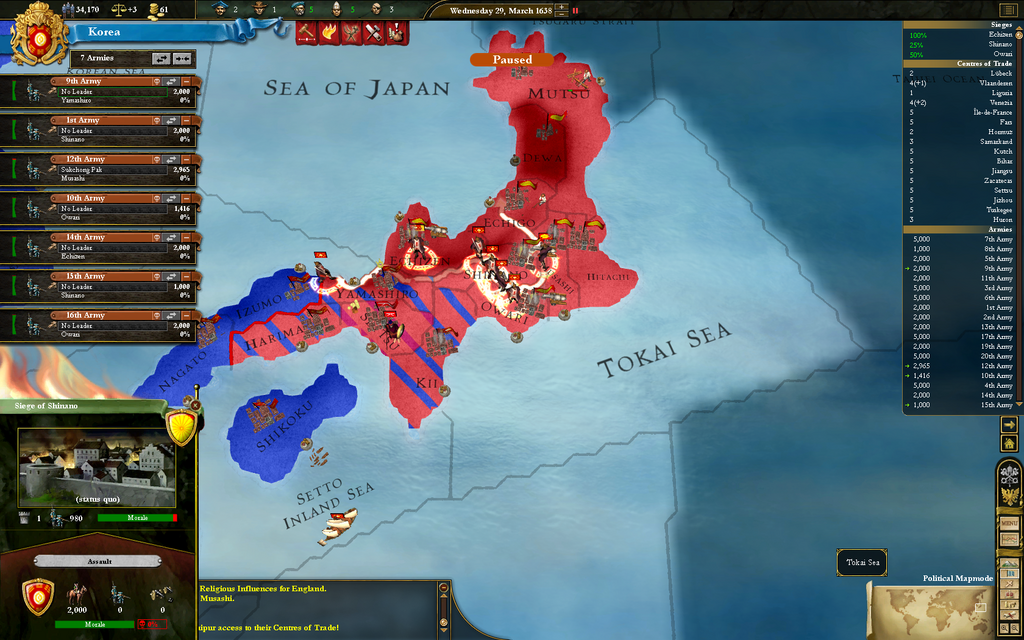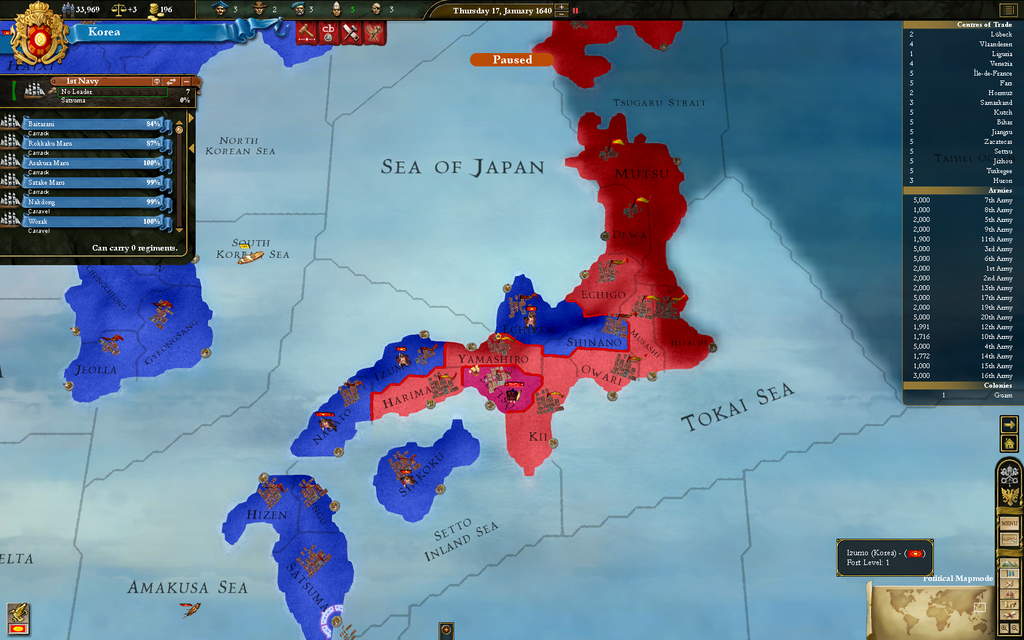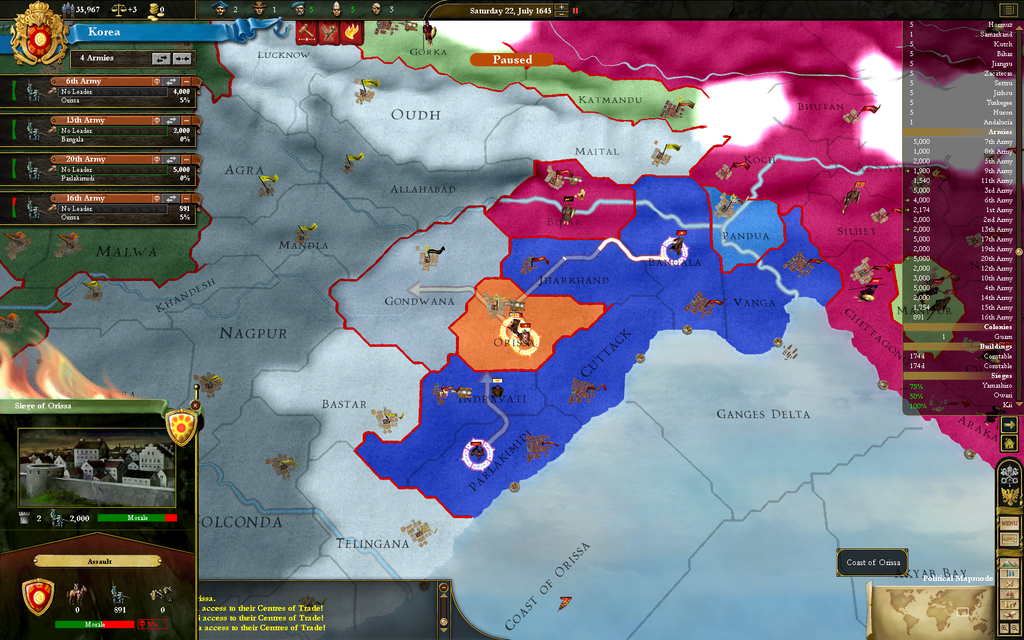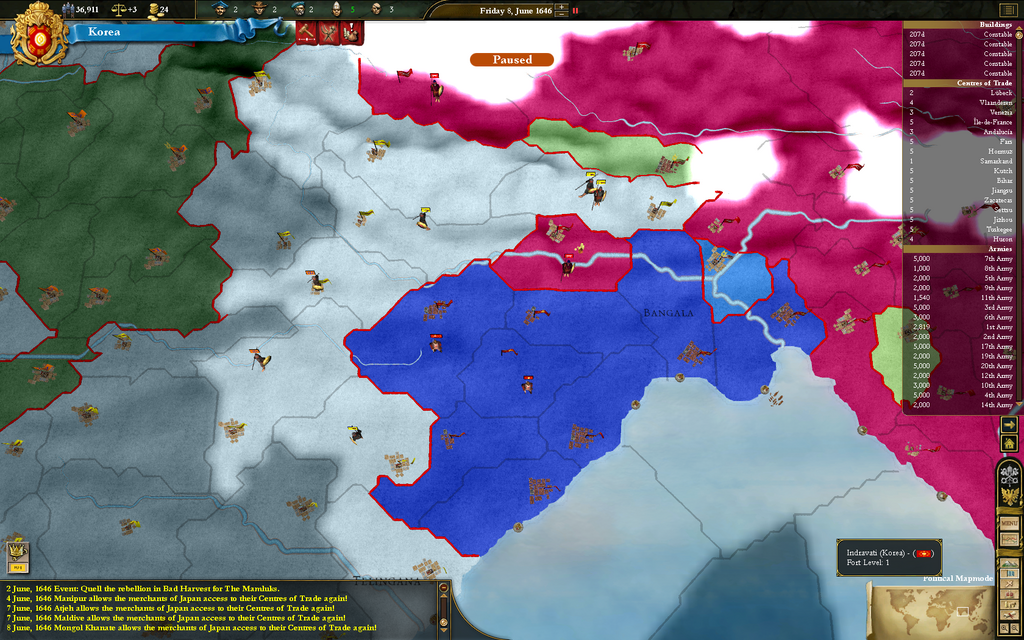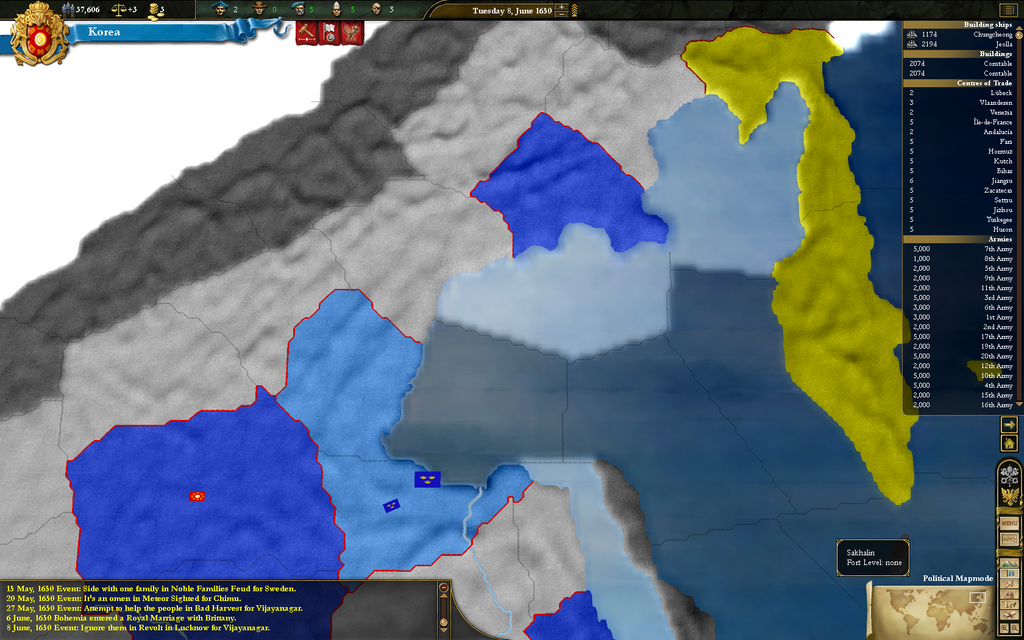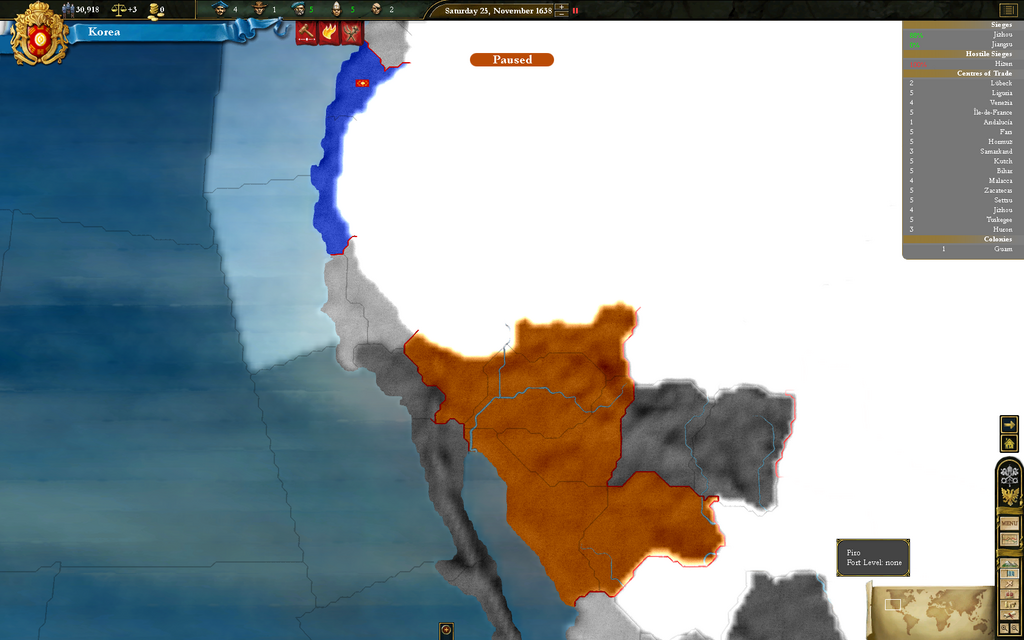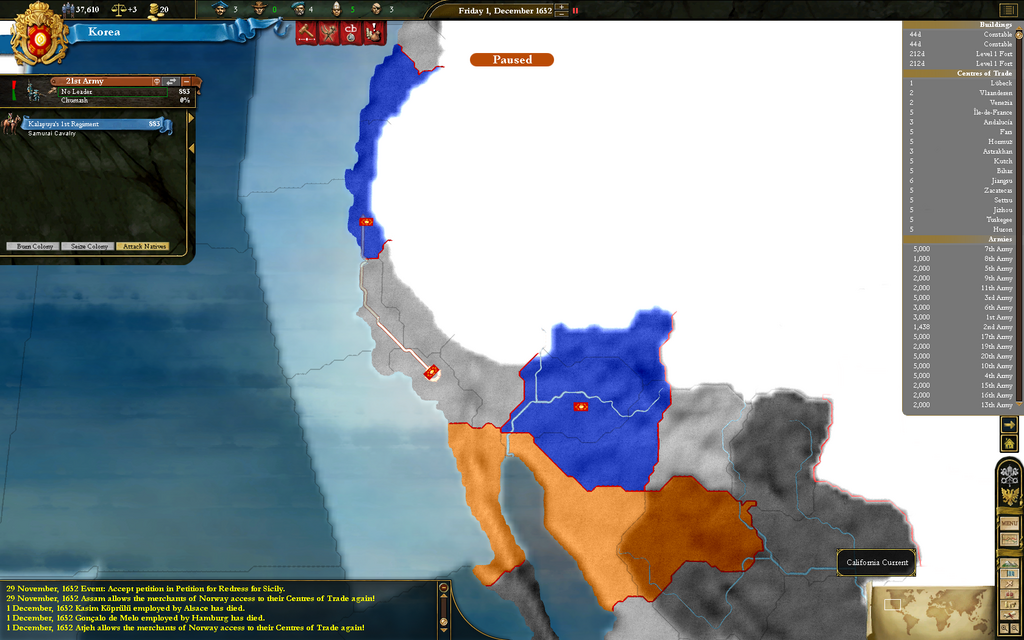Hi, this is my first AAR and I hope it's an enjoyable read. I would have liked to added screenshots, unfortunately I don't have knowledge to display them asthetically, have a host for them, nor have actual screen shots for the time-period in this volume :wacko: :rofl: . If someone would like to help and/or offer advice with the former two issues, please do. Much of this is from memory by the way, but I felt this game was worthy of an AAR so I decided to start writing it up. Anyway, on to the report!
In the new year of 1632, I, Kyonjong Lip, diplomat of 48 years in the service of the royal court of Korea, now submit these volumes of the History of Korea. It has been scant a year since the end of Succession War of Japan, during which agents of the despicable Ming burned the Royal Palace and Library and destroying much of the historical archives.
In his wisdom, King Myonjong II commissioned this work so that the people will not forget our origins and the story of our great nation’s rise.
May this humble work please the royal court and let it stand testament to the great struggles our nation and people have endured.
Volume 1
Tan-jong 1452 – 1460
While only ruling for 8 short years, Tan-jong did much to build our nation economically and idealistically. Realizing that his people and land were immensely poor compared to his neighbors, Ming and Japan, he instituted a National Trade Policy and sent merchants to Centers of Trade whenever space availed itself to bring back wealth to the Korean peninsula.
However, Tan-jong was also a dreamer. While vastly improving our economy with foreign gold, he had stumbled upon a map that marked Haixi to the north was originally Korean land. Multiple diplomatic approaches to the Manchu, the current occupiers of the province, were made in vain. Much to history’s dismay, before his dream of liberating Haixi was realized, Tan-jong passed from this world.
Songjong II 1460 – 1470
It was his son, Sonjong II, that chased after his father’s dream and decided that the occupation of Haixi had gone on too long and was an affront to the Korean people and nation. He launched a three-year campaign against the Manchu with the aim of forcing them to release Haixi.
Some of the surviving documents reveal that the Manchu’s fielded an army roughly 4000 strong, evenly mixed with infantry and cavalry. Korea appeared to have marshaled a similar number, though 3 regiments of cavalry and 1 regiment of infantry.
After an astounding victory outside the gates Haixi under the command of Songjong II, He quickly divided his forces for the next phase of his strategy. The infantry remained at Haixi to besiege it while two cavalry regiments under Songjong II’s command raced after the already demoralized enemy headed towards Ninguta. The remaining cavalry then headed to the undefended and unfortified province of Wusuli to the east, with orders to take Sanxing in succession.
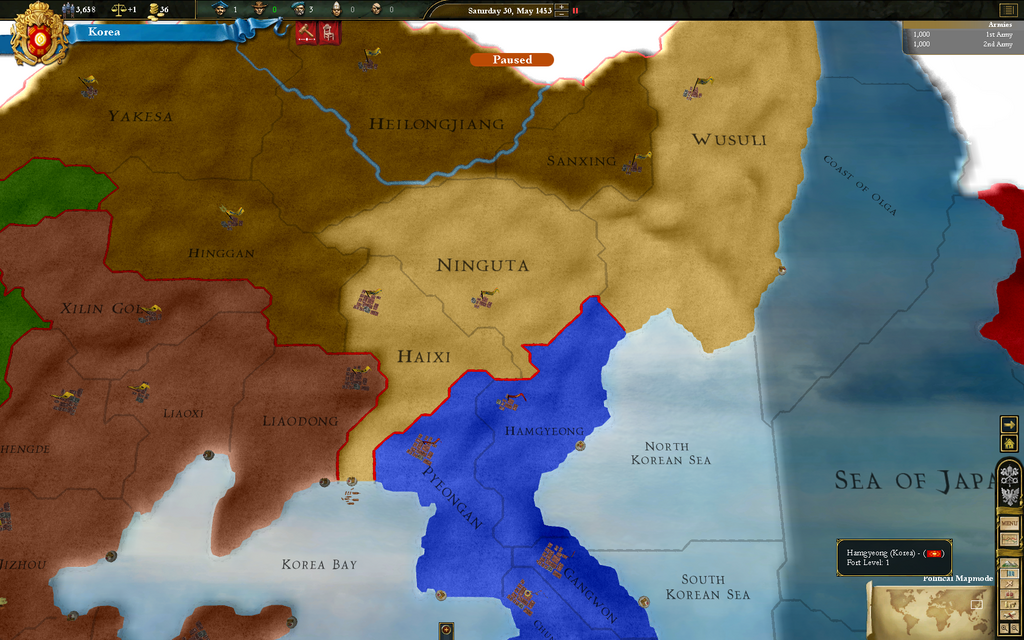
(image added to help follow the action. was not taken during or after the war)
Alarmed at reports of growing numbers of mercenaries and Manchu reinforcements swelling in the province of Hinggan, the Manchu capital, Songjong II ordered that mercenaries be hired and men trained in Pyeongan to reinforce the siege and his cavalry regiments.
The war escalated as the Manchu mobilized their reserve and mercenary forces. However, due to excellent leadership and perhaps even divine intervention, all the fighting happened on Manchu land and our peasantry went relatively unscathed. But, the people and men were growing tired and Songjong II knew that the conflict had to end even though he still enjoyed unanimous support throughout the country.
Multiple entreaties to cede Haixi had been rejected by the Manchu and Songjong II knew he had to subjugate the entire Manchu nation before they would finally acknowledge defeat.
It was at the climatic battle in Heilongjiang that decisively ended the war in Korea’s favor. A surviving war report states that the Manchu foolishly tried crossing a broad river to launch a surprise attack against a Korean encampment but were met with the bows and lances of our cavalry. Those that managed to avoid being shot or skewered drowned or fled for their lives. Hinggan fell soon after. With their army in disarray and broken and all their lands occupied, the Manchu finally ceded Haixi and submitted to becoming a vassal of Korea.
Realizing a power was emerging from the Korean peninsula, both the Ming and Japan offered military alliances within a year of the end of the Korean-Manchurian War. Smiling, these offers were accepted and taken by the court and the people as being the first steps of becoming a distinguished nation.
Unfortunately, Songjong II was wounded during the war and was much maligned by his injury in the years after. Like his father before him, his reign was cut short and he passed from this world young, but content in fulfilling his father’s dream and thinking he had ensured his nation’s future through strong alliances. History would prove him to be only half-right.
In the new year of 1632, I, Kyonjong Lip, diplomat of 48 years in the service of the royal court of Korea, now submit these volumes of the History of Korea. It has been scant a year since the end of Succession War of Japan, during which agents of the despicable Ming burned the Royal Palace and Library and destroying much of the historical archives.
In his wisdom, King Myonjong II commissioned this work so that the people will not forget our origins and the story of our great nation’s rise.
May this humble work please the royal court and let it stand testament to the great struggles our nation and people have endured.
Volume 1
Tan-jong 1452 – 1460
While only ruling for 8 short years, Tan-jong did much to build our nation economically and idealistically. Realizing that his people and land were immensely poor compared to his neighbors, Ming and Japan, he instituted a National Trade Policy and sent merchants to Centers of Trade whenever space availed itself to bring back wealth to the Korean peninsula.
However, Tan-jong was also a dreamer. While vastly improving our economy with foreign gold, he had stumbled upon a map that marked Haixi to the north was originally Korean land. Multiple diplomatic approaches to the Manchu, the current occupiers of the province, were made in vain. Much to history’s dismay, before his dream of liberating Haixi was realized, Tan-jong passed from this world.
Songjong II 1460 – 1470
It was his son, Sonjong II, that chased after his father’s dream and decided that the occupation of Haixi had gone on too long and was an affront to the Korean people and nation. He launched a three-year campaign against the Manchu with the aim of forcing them to release Haixi.
Some of the surviving documents reveal that the Manchu’s fielded an army roughly 4000 strong, evenly mixed with infantry and cavalry. Korea appeared to have marshaled a similar number, though 3 regiments of cavalry and 1 regiment of infantry.
After an astounding victory outside the gates Haixi under the command of Songjong II, He quickly divided his forces for the next phase of his strategy. The infantry remained at Haixi to besiege it while two cavalry regiments under Songjong II’s command raced after the already demoralized enemy headed towards Ninguta. The remaining cavalry then headed to the undefended and unfortified province of Wusuli to the east, with orders to take Sanxing in succession.

(image added to help follow the action. was not taken during or after the war)
Alarmed at reports of growing numbers of mercenaries and Manchu reinforcements swelling in the province of Hinggan, the Manchu capital, Songjong II ordered that mercenaries be hired and men trained in Pyeongan to reinforce the siege and his cavalry regiments.
The war escalated as the Manchu mobilized their reserve and mercenary forces. However, due to excellent leadership and perhaps even divine intervention, all the fighting happened on Manchu land and our peasantry went relatively unscathed. But, the people and men were growing tired and Songjong II knew that the conflict had to end even though he still enjoyed unanimous support throughout the country.
Multiple entreaties to cede Haixi had been rejected by the Manchu and Songjong II knew he had to subjugate the entire Manchu nation before they would finally acknowledge defeat.
It was at the climatic battle in Heilongjiang that decisively ended the war in Korea’s favor. A surviving war report states that the Manchu foolishly tried crossing a broad river to launch a surprise attack against a Korean encampment but were met with the bows and lances of our cavalry. Those that managed to avoid being shot or skewered drowned or fled for their lives. Hinggan fell soon after. With their army in disarray and broken and all their lands occupied, the Manchu finally ceded Haixi and submitted to becoming a vassal of Korea.
Realizing a power was emerging from the Korean peninsula, both the Ming and Japan offered military alliances within a year of the end of the Korean-Manchurian War. Smiling, these offers were accepted and taken by the court and the people as being the first steps of becoming a distinguished nation.
Unfortunately, Songjong II was wounded during the war and was much maligned by his injury in the years after. Like his father before him, his reign was cut short and he passed from this world young, but content in fulfilling his father’s dream and thinking he had ensured his nation’s future through strong alliances. History would prove him to be only half-right.
Last edited:



